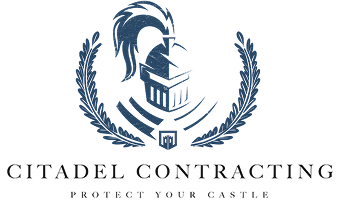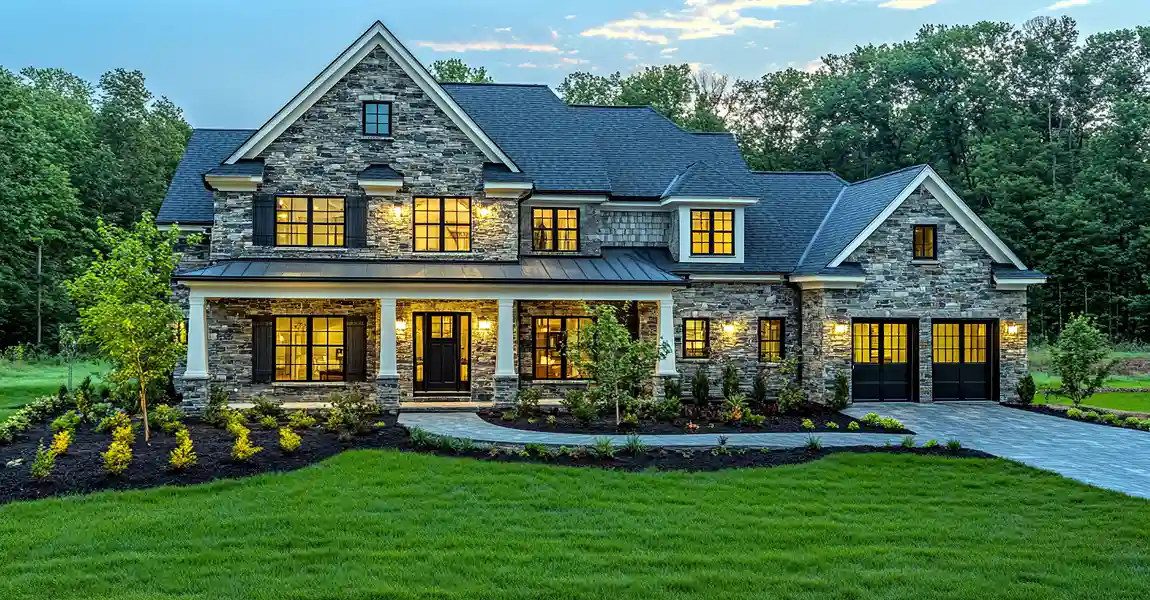Raleigh has a rich architectural history, with neighborhoods like Historic Oakwood and Boylan Heights showcasing homes that have stood for over a century. These roofs tell stories of craftsmanship and tradition, but they need special care to stay strong. Preserving historical roofs isn’t like working on modern ones—it requires patience, skill, and an understanding of traditional materials and methods.
At Citadel Contracting, we’ve worked on many of Raleigh’s historical homes, using time-tested historical roofing techniques to protect their character while reinforcing their durability. If you want to preserve your home’s roof and maintain its historical charm, here are some best practices to follow.
Schedule regular roof inspections
Historical roofs are more vulnerable to damage than modern ones, especially with Raleigh’s unpredictable weather. Regular inspections help catch small problems before they turn into costly repairs.
What to look for during inspections:
- Cracked, missing, or curling shingles or tiles
- Deteriorating or rusted flashing around chimneys and vents
- Signs of water damage in the attic, like stains or mold
- Moss or algae growth, especially on shaded sections
We recommend having your roof inspected at least twice a year—once in the spring and again in the fall. A homeowner in Oakwood once called us about a minor ceiling stain. After a thorough check, we discovered that water had been seeping in through cracked slate tiles for months. Early detection saved them from much more extensive damage.
Use materials that match the original design
Preserving a historical roof requires materials that look and function like the originals. Using modern substitutes might seem easier, but it can compromise both the roof’s integrity and the home’s historical character.
How to source the right materials:
- Identify the original materials, whether slate, clay tiles, or cedar shakes
- Find suppliers who specialize in historical roofing materials
- Opt for custom-made pieces when exact matches aren’t available
We worked on a 1920s bungalow near Cameron Village where the owner wanted to preserve the cedar shake roof. After searching across North Carolina, we found a mill that still hand-split cedar shakes using traditional techniques. The result? A roof that looked like it came straight from the 1920s while meeting modern durability standards.
Follow traditional installation techniques
Historical roofs were built with craftsmanship that modern techniques don’t always replicate. Using historical roofing techniques ensures the roof retains its authentic look and performs as intended.
Traditional techniques we still use today:
- Hand-nailing slate tiles to avoid cracking
- Layering clay tiles with precision for water runoff
- Installing cedar shakes with traditional spacing to allow natural ventilation
During a Historical Roof Restoration in Raleigh’s Glenwood-Brooklyn area, we replaced old clay tiles using traditional overlapping methods. It took longer than modern techniques, but the end result was a roof that blended perfectly with the home’s original architecture.
Keep the roof clean and free of debris
Moss, algae, and debris can cause significant damage to historical roofs if left unchecked. In Raleigh’s humid climate, these issues are common, especially on shaded roofs.
How to keep your roof clean:
- Schedule professional roof cleanings annually
- Trim overhanging branches to reduce moss growth
- Install copper or zinc strips near the roof ridge to prevent algae buildup
We recently helped a homeowner in Five Points who was dealing with moss growth on their slate roof. The moss had already caused some tiles to crack. After cleaning the roof and replacing damaged tiles, we added copper strips to prevent future growth.
Maintain the gutters and drainage system
Good drainage is crucial for preserving any roof, but it’s especially important for historical ones. Clogged or damaged gutters cause water to back up, which can lead to wood rot and leaks.
Gutter maintenance steps:
- Clean gutters and downspouts twice a year
- Install gutter guards to reduce leaf buildup
- Check for cracks or sagging sections regularly
While working on a Historical Roof Restoration in Raleigh’s Mordecai neighborhood, we found water damage near the eaves caused by clogged gutters. Regular cleaning would have prevented the issue entirely.
Ensure proper ventilation for the roof
Proper ventilation extends the life of historical roofs by reducing moisture buildup. Many older homes were built without modern ventilation systems, which can lead to problems like mold and wood rot.
Tips for improving roof ventilation:
- Add ridge and soffit vents if they don’t disrupt the roof’s appearance
- Inspect attic ventilation during seasonal roof checks
- Make sure insulation doesn’t block airflow
A homeowner near North Hills called us after noticing mold in their attic. We discovered that the insulation had shifted, blocking the vents and trapping moisture. After fixing the ventilation system, the mold stopped growing.
Repair damage immediately to prevent larger issues
Small roofing problems become big ones when ignored. Whether it’s a missing tile or a cracked flashing joint, prompt repairs protect the roof’s integrity.
Signs that need immediate attention:
- Loose or missing shingles or tiles
- Water stains on ceilings or walls
- Rusted or cracked flashing around chimneys and vents
One homeowner in Oakwood waited months to address a small leak. By the time they called us, the wooden supports had rotted, requiring a much more expensive repair than if they’d addressed it sooner.
Work with professionals experienced in historical roofing
Historical roofing isn’t something every contractor understands. It requires specialized knowledge about traditional materials, techniques, and local preservation rules.
What to look for in a roofing contractor:
- Experience with historical homes and materials
- Knowledge of Raleigh’s preservation guidelines
- A portfolio of previous historical roofing projects
Citadel Contracting has restored roofs on homes across Raleigh, from Historic Oakwood to Hayes Barton. Our team knows how to balance modern performance with historical authenticity, ensuring compliance with local regulations.
Understand and follow Raleigh’s preservation rules
Raleigh’s historical districts have specific rules about roofing materials, colors, and techniques. Before starting any work, homeowners must ensure their plans align with these guidelines.
Key steps for compliance:
- Consult the Raleigh Historic Development Commission (RHDC) if your home is in a protected district
- Use approved materials and methods that match the original design
- Document the restoration process for future reference
We worked with a family in Oakwood who initially planned to replace their slate roof with asphalt shingles. We explained the local rules and helped them find natural slate tiles that matched the home’s historical character.
Plan for long-term maintenance
Historical roofs are long-lasting when properly maintained. Creating a maintenance schedule helps extend their lifespan and avoid costly repairs.
Long-term maintenance tips:
- Schedule roof inspections every six months
- Clean gutters and roof surfaces regularly
- Monitor attic conditions for moisture or pests
We offer maintenance services for homeowners who want to protect their investment. In neighborhoods like Five Points, we’ve seen how proactive care keeps historical roofs looking great for decades.
Conclusion
Preserving a historical roof in Raleigh requires more than quick fixes. It demands attention to detail, traditional materials, and regular maintenance. From routine inspections to using time-tested historical roofing techniques, these steps will help your roof stand strong for years to come.
At Citadel Contracting, we’re proud to help homeowners across Raleigh maintain their historical roofs. If you need advice, repairs, or a full Historical Roof Restoration, we’re just a phone call away.
Frequently Asked Questions
How often should I inspect my historical roof?
We recommend inspections twice a year—once in spring and once in fall. After major storms, it’s also a good idea to check for damage.
What materials are commonly used in Raleigh’s historical roofs?
Slate, clay tiles, and cedar shakes are the most common. Many older homes also feature copper or lead flashing.
Can modern materials be used in historical roofing?
Yes, but only when they match the original appearance and function. Synthetic slate, for instance, can replicate natural slate while offering better durability.
How can I prevent moss growth on my historical roof?
Trim overhanging branches to let more sunlight reach the roof, and install copper or zinc strips near the ridge to prevent moss growth.
Are there rules for restoring historical roofs in Raleigh?
Yes. Raleigh has strict preservation guidelines for historical districts like Oakwood. We can help ensure your restoration complies with these rules.
Why choose Citadel Contracting for historical roof restoration?
We have years of experience with Raleigh’s historical homes and a deep understanding of traditional materials and methods. Our Historical Roof Restoration services protect your home’s character while improving its durability.










